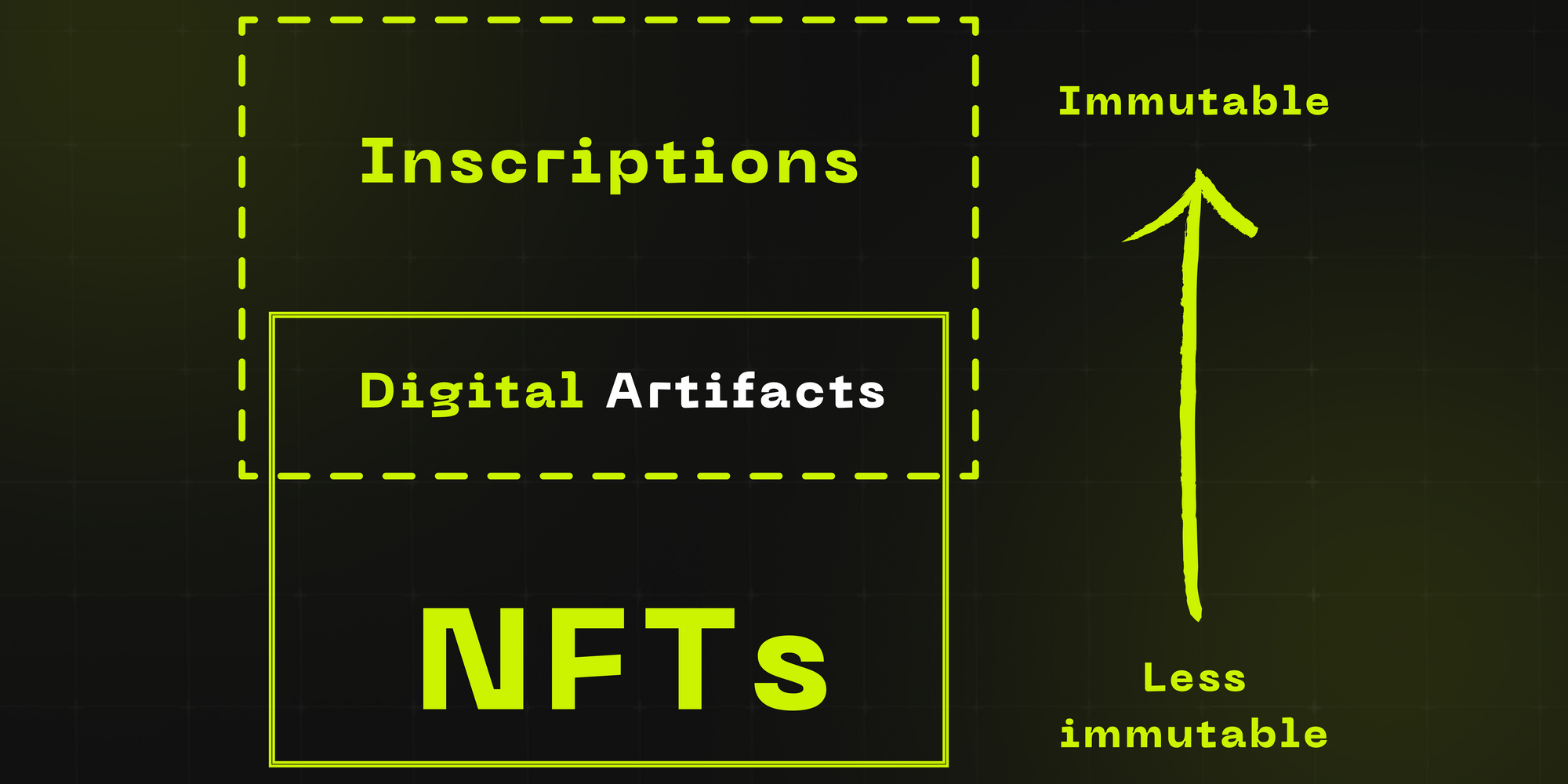The Difference between Inscriptions & NFTs

Inscriptions have some unique qualities that make them different than NFTs.
Both NFTs and Inscriptions are types of "Digital Artifacts", but Inscriptions are immutable whereas most NFTs are not necessarily immutable. Inscriptions can be a video, pdf, or any type of data, but they are currently most commonly images the same way we think of "NFTs" on other blockchains like Ethereum.
Here's a good way to visualize the difference:

An Inscription is actually stored on the Bitcoin blockchain whereas an NFT is usually actually stored off-chain on a third party server such as Amazon's AWS.
How is does this work?
A Bitcoin transaction can contain some data with it, called the "witness data". That data is then put onto the Bitcoin blockchain forever when the transaction is added to a block, which is then put into the blockchain. An Inscription, then, is a specific type of content that goes into the witness data of a Bitcoin transaction.
As Ordinal Theory creator Casey Rodarmor says:
"The definition of a digital artifact is intended to reflect what NFTs should be, sometimes are, and what inscriptions always are, by their very nature."
The ownership of Inscriptions is then tracked with Ordinal Theory, by associating each Inscription with an individual satoshi (1 Bitcoin = 100,000,000 satoshis).

